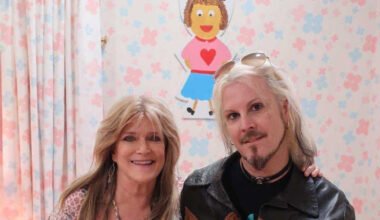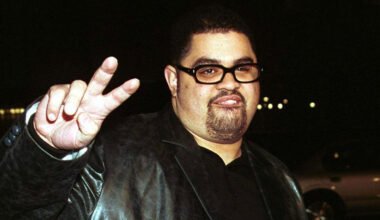Updated on: August 11, 2025
Basic Information
| Item | Detail |
|---|---|
| Name | Jacob Moskowicz (records also show Mosko; family histories sometimes list Moskowitz) |
| Born | 1868, Russian Empire (present-day Poland) |
| Immigrated to the U.S. | 1907 via Ellis Island (surname shortened to Mosko in immigration records) |
| Settled | Denver, Colorado |
| Occupation | Blacksmith; later worked on the railway in Denver |
| Spouse | Ida Moskowicz (née Rubenstein), born c.1880, immigrated 1908 |
| Children | 10 |
| Notable descendants | Daughter Ruth Marianna Mosko (Ruth Handler) — b. November 4, 1916; grandchildren Barbara (b. 1941) and Kenneth (1944–1994) |
| Died | 1944 in Colorado, age 76 |
| Public profile | Working-class immigrant life; later remembered in family accounts tied to Ruth Handler and the origins of Barbie |
A life that reads like a migration montage
When I imagine Jacob stepping down from a ship at Ellis Island in 1907, I see him carrying not just a single valise but an entire past — the rhythm of a workshop, the language of a small Polish-Jewish town, the constant low hum of threats: conscription, antisemitism, the kind of pressure that makes people fold up an old life and carry it across an ocean. He arrived with a name that changed in ink — Moskowicz to Mosko on the manifest — and with hands already trained to shape metal. Those hands would become his currency in a new world.
Numbers anchor us: born 1868, immigrated 1907, died 1944 at 76. That arithmetic tells us the arc: childhood in the Russian Empire, midlife upheaval, decades spent in Denver building a household. But numbers are only the scaffolding — the real story is in the strikes of a hammer, the howl of a winter wind against a Denver window, and the laughter of ten children echoing down the stairs.
From forge to railway — work, skills, survival
Jacob’s trade as a blacksmith is not a romantic side note; it is the spine of his American life. Blacksmithing was portable skill — you could land in a town with few resources and still be useful, still be paid. It was also a trade that required patience, precision, and the acceptance of long, dirty hours. Later work on the railway in Denver points to the era’s possibilities: the expanding West needed muscle and craft, and immigrants like Jacob supplied both.
Think of it as a daily ledger of survival: shifts at the forge, nights spent patching tools or shoeing horses, later stretches on the rails where the country’s arteries were being laid. He didn’t accumulate headlines or portfolios; he accumulated a family, resilience, and the kind of quiet expertise that made him indispensable in his neighborhood.
Family: ten children, one quiet revolution
Here’s the cinematic image I can’t shake: a single modest home, ten children, and a mother — Ida — managing the household like a captain at a small but steady ship. Ida (born c.1880) joined Jacob in the U.S. in 1908 with their children, and together they built a crowded, disciplined, affectionate life. That household was the crucible in which future cultural ripples formed.
Among those children was Ruth Marianna Mosko, born November 4, 1916, in Denver. Ruth’s later life — co-founding Mattel and creating the Barbie doll — often becomes the headline in family stories, and rightly so: her creation reshaped toy culture worldwide. Yet the origin story always returns to Jacob and Ida’s kitchen table, the immigrant ethic they modeled, the necessity of hard work, and the kind of scarcity that teaches invention.
A simple table helps the math of legacy:
| Generation | Name (born–died) | Notable detail |
|---|---|---|
| Parents | Jacob (1868–1944) & Ida (c.1880–?) | Immigrants; parents of 10 |
| Child | Ruth Marianna Mosko (1916–) | Co-founder of Mattel; creator of Barbie |
| Grandchildren | Barbara Handler (b.1941); Kenneth Handler (1944–1994) | Inspiration for Barbie and Ken; Kenneth worked briefly in the family business |
| Great-grandchildren | Stacy Handler | Part of the extended family legacy tied to Mattel |
It’s a tidy lineage on paper, but messy and luminous in reality — the way real families are.

The quiet archive — memory, mentions, and cultural echoes
Jacob himself never became a public figure — he left no corporate filings, no business bios, no op-eds. His presence is archival and domestic: census lines, ship manifests, family recollections, and the way children mention “my father” in interviews about their own startups. In the cultural imagination, he crops up most often as the immigrant progenitor — the man whose labor made space for a later entrepreneurial explosion.
In recent cultural retellings — especially those that re-examine origin stories — Jacob’s journey is offered as a human detail that reframes big-brand mythology. The creator of a global toy brand has a backstory rooted in a blacksmith’s forge and a mother who emigrated with ten kids. It’s the kind of counterpoint that makes brand origin stories feel human: not a single, solitary genius, but a family shaped by migration, hunger, and the kind of optimism that takes practical form.
Reputation, wealth, and what the ledger won’t show
If you’re scanning for net worth or business titles attached to Jacob, the ledger is blank. He was a working-class immigrant; his wealth was measured in bread on the table and apprenticeships taught to sons and daughters. Mattel’s later financial success is part of the family’s arc, not Jacob’s personal estate. That distinction matters: family fortunes can be built on the quiet capital of an earlier generation without that generation ever benefiting in headline terms.
In short: Jacob’s legacy is social and cultural more than fiscal. His true currency was habit — the habit of showing up, the habit of craftsmanship, the habit of family.
Why the small stories matter
I like telling this kind of biography because it rewires how we read success. We often fast-forward to the glitter — the doll, the company, the glossy magazine spreads — and forget the slow montage that made them possible: a man fleeing conscription, a couple raising ten children in Denver, a workshop that smelled of coal and patience. When you see a Barbie on a shelf, remember you’re also looking, by trace and inheritance, at a lineage that began with a blacksmith’s fists and an immigrant couple’s audacity.
FAQ
When and where was Jacob Moskowicz born?
Jacob was born in 1868 in the Russian Empire in what is now Poland.
When did he immigrate to the United States?
He arrived at Ellis Island in 1907, where his surname appears shortened to Mosko on immigration records.
What work did Jacob do in America?
He worked as a blacksmith and later on the railway in Denver, Colorado.
How many children did Jacob have?
Jacob and Ida had ten children.
Who was Jacob’s most famous child?
His daughter Ruth Marianna Mosko (Ruth Handler), born November 4, 1916, co-founded Mattel and created the Barbie doll.
When did Jacob Moskowicz die?
Jacob passed away in Colorado in 1944 at the age of 76.






